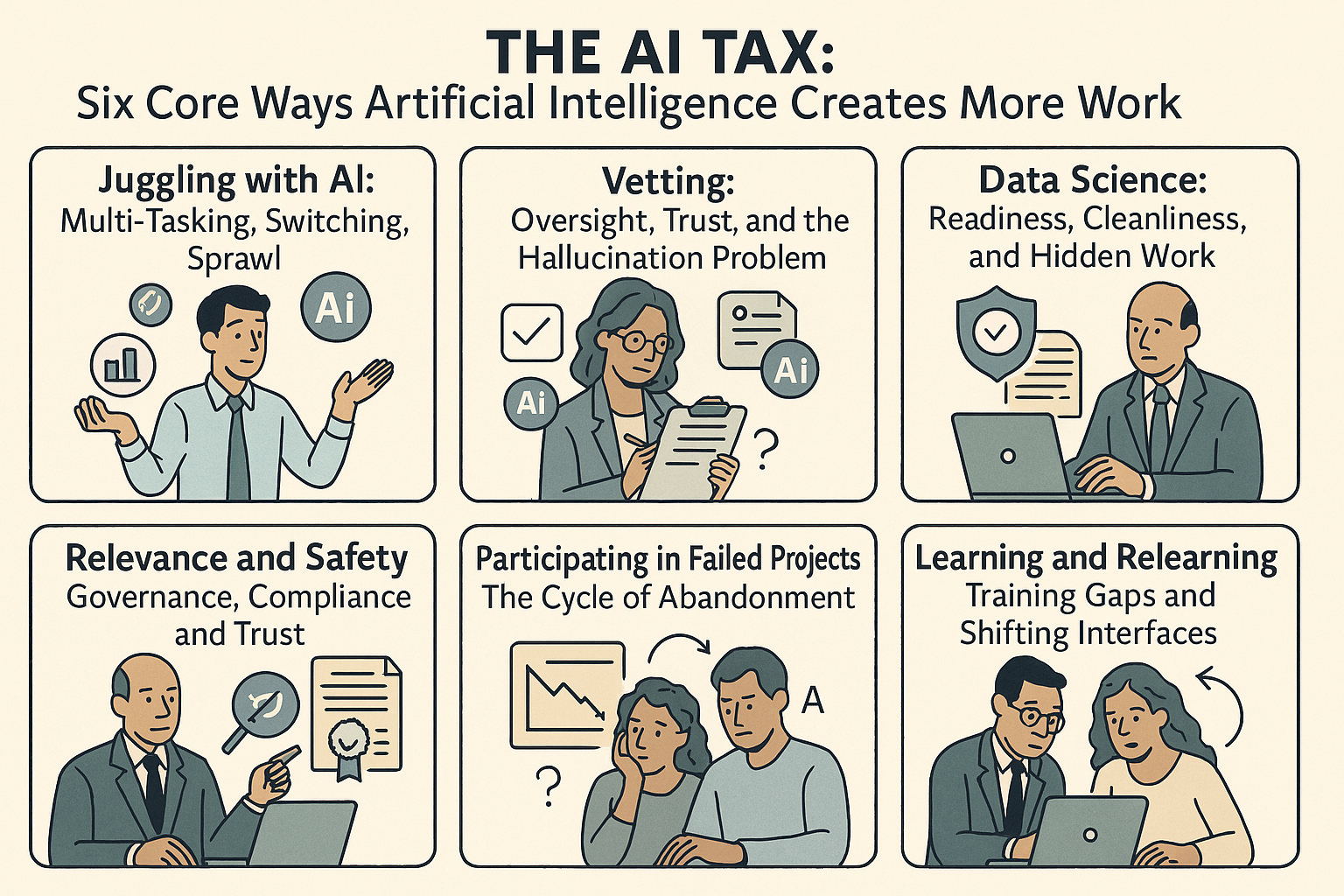TechTalk Daily

April 15th By Daniel W. Rasmus, Serious Insights
AI was supposed to help. In many ways, it does. But in just as many—and often more—it generates new layers of complexity. The visual “How AI Creates New Work and Wastes Time” captures six operational stress points that consistently appear in AI rollouts. They aren’t theoretical. They reflect the real work happening under the radar.
Image by ChatGPT from a prompt and illustration created by the author.
Each of these categories is not just a single pain point—they’re proxies for deeper, compounding issues.
“Multi-tasking” undersells what’s really happening. People are toggling between tools, between models, and between metaphors of interaction. One AI tool for scheduling, another for summarizing, a third embedded in email, a fourth in a line-of-business app. The term for this is toolchain sprawl—and it’s becoming one of the most visible symptoms of disorganized AI adoption.
That sprawl creates hidden costs. Each new AI product adds another learning curve, another disconnected knowledge silo. The sum is less efficiency, not more. Operational continuity breaks down. Work becomes an exercise in digital juggling, where focus is sacrificed on the altar of automation.
AI doesn’t get a free pass. Every output it creates must be checked, confirmed and edited. Vetting isn’t just a QA step—it’s a daily practice. Prompting isn’t the end of the process; it’s the beginning of a new one―a potentially slower one, depending on the length and complexity of the content.
Because AI tends to hallucinate, confidence in its output demands full reviews. That means time, labor, and knowledge that must come from somewhere—usually from people who already have too little of all three. Vetting also becomes a form of shadow labor. Unmeasured. Underreported. But real.
The diagram’s nod to “Data Science” hides a more pervasive issue: data readiness. Most organizations aren’t ready. Their data is old, misaligned, mislabeled, and scattered. AI exposes this immediately—garbage in, garbage out has never been more true.
Much of the AI work, especially in large enterprises, involves preparation: reconciling formats, cleaning inputs, resolving duplicates, and tagging content. This is expensive, ongoing, and largely invisible to executives expecting fast transformation. It’s not “AI work” in a narrow sense—it’s the work AI demands before it becomes useful.
Discover the final 3 Core Ways Artificial Intelligence Creates More Work—click to continue at SeriousInsights.net!
About the Author:
Daniel W. Rasmus, the author of Listening to the Future, is a strategist and industry analyst who has helped clients put their future in context. Rasmus uses scenarios to analyze trends in society, technology, economics, the environment, and politics in order to discover implications used to develop and refine products, services, and experiences. He leverages this work and methodology for content development, workshops, and for professional development.